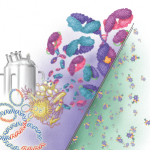According to Dr. Peng, “Biosimilars are delivering savings and expanding patient access.” As of October, 61 biosimilars had been approved for 17 reference products, saving $36 billion and resulting in 495 million days of therapy that wouldn’t have been possible without them, with no reports of major safety or efficacy issues, she said. (Note: In the question-and-answer period following the presentation, one attendee questioned the claim of savings, asking where those savings are being recognized and by whom. The question went unanswered.)
The comparative analytical assessment, or CAA, is the main foundation behind biosimilar development. It offers detailed comparisons of structure and function in state-of-the-art ways that have been shown to be sensitive and reliable for showing product differences between biosimilars and the original, she said.
A biosimilar is “highly similar to and has no clinically meaningful differences from the FDA approved reference product,” despite the unavoidable existence of “inherent variation” across batches that is seen in all biologic therapies, including the reference products, she said.
For an interchangeable product, the manufacturer has to seek special approval.
“The manufacturer of an interchangeable biosimilar needs to submit information to show that the proposed product can be expected to produce the same clinical result as the reference product in any given patient and also that the risk, in terms of safety or diminished efficacy of alternating between the biosimilar and the reference product, is not greater than the risk of using the reference product without such a switch,” she said.
The FDA recently issued new guidance on interchangeability, saying that switching studies—in which outcomes for patients who have switched from a biosimilar to a reference product or vice versa are compared with outcomes from patients who haven’t switched—are no longer required. An FDA analysis of more than 5,000 cases of switching, compared with 5,000 control cases, showed no differences in deaths, adverse events, discontinuations or immunogenicity. The comparative analysis itself is “a more sensitive evaluation for potential differences between biosimilars and their reference products,” Dr. Peng said.
Addressing Open Questions
Audience members expressed some frustrations and confusions about pediatric therapies.
Laura Schanberg, MD, professor of pediatrics at Duke University, Durham, N.C., said she and others are not sure what to make of the interchangeable designation.
“I’m still confused about the difference between interchangeability vs. just the more general biosimilar,” Dr. Schanberg said. “I understand the difference in whether it needs to be approved by a doctor, but how is that decision actually made? What difference does that actually represent?”




